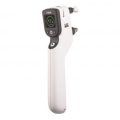-
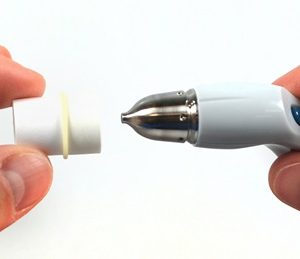
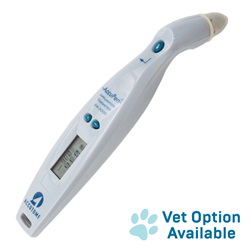 Busy facilities deserve and instrument that will come through in the clutch, which is why Accutome is proud to offer the AccuPen and AccuPen Vet handheld tonometers for patient IOP screening. Our AccuPen line is accurate, easy-to-use, portable, and versatile making it an industry must-have for IOP screening. The AccuPen Vet features our latest One tap - One Reading Gravity Offset Technology which provides accurate IOP measurements with less calibration in any testing position.
Busy facilities deserve and instrument that will come through in the clutch, which is why Accutome is proud to offer the AccuPen and AccuPen Vet handheld tonometers for patient IOP screening. Our AccuPen line is accurate, easy-to-use, portable, and versatile making it an industry must-have for IOP screening. The AccuPen Vet features our latest One tap - One Reading Gravity Offset Technology which provides accurate IOP measurements with less calibration in any testing position. -
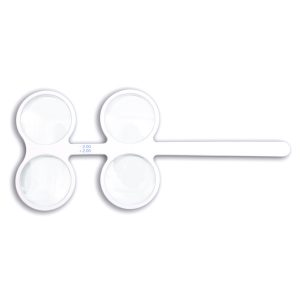 Our Accommodative Flipper without the Bernell Imprint Test and train for accommodative facility, accommodative rock, positive/negative relative accommodation and convergence and fusional convergence reserves. May delay bifocal use with some early presbyopes. Assists in hyperopia screening and lens demonstrations. Durable, white plastic holds shape under low heat for lens insertion. Powers listed on handle. One pair plus; one pair minus. Select from +/- 0.25 to 4.00 diopters in 0.25 increments. Item #: BC1270NI+
Our Accommodative Flipper without the Bernell Imprint Test and train for accommodative facility, accommodative rock, positive/negative relative accommodation and convergence and fusional convergence reserves. May delay bifocal use with some early presbyopes. Assists in hyperopia screening and lens demonstrations. Durable, white plastic holds shape under low heat for lens insertion. Powers listed on handle. One pair plus; one pair minus. Select from +/- 0.25 to 4.00 diopters in 0.25 increments. Item #: BC1270NI+ -
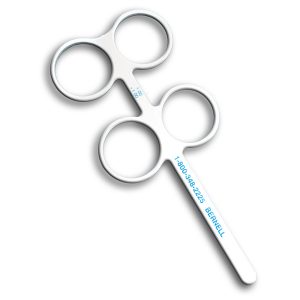 Test and train for accommodative facility, accommodative rock, positive/negative relative accommodation and convergence and fusional convergence reserves. May delay bifocal use with some early presbyopes. Assists in hyperopia screening and lens demonstrations. Durable, white plastic holds shape under low heat for lens insertion. Powers listed on handle. One pair plus; one pair minus. Select from +/- 0.25 to 4.00 diopters in 0.25 increments. Item #: BC1270+
Test and train for accommodative facility, accommodative rock, positive/negative relative accommodation and convergence and fusional convergence reserves. May delay bifocal use with some early presbyopes. Assists in hyperopia screening and lens demonstrations. Durable, white plastic holds shape under low heat for lens insertion. Powers listed on handle. One pair plus; one pair minus. Select from +/- 0.25 to 4.00 diopters in 0.25 increments. Item #: BC1270+ -
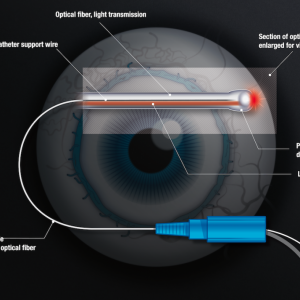
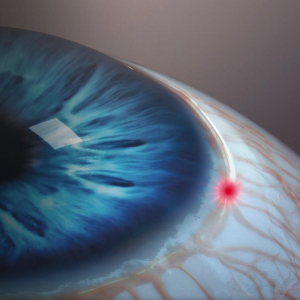
The optimum in minimally invasive, canal-based glaucoma surgery
With a mild touch and manifest efficacy, ABiC™ performed with the iTrack™ surgical system is a comprehensive minimally invasive glaucoma surgery that can effectively reduce IOP and eliminate or reduce the medication burden. Restorative and atraumatic, ABiC™ can be performed across the entire glaucoma disease process – and in conjunction with other treatments and MIGS options. -
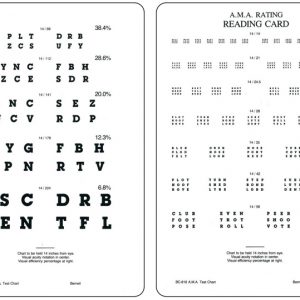 This much requested Near Acuity Card was originally developed by the American Optometric Association.
This much requested Near Acuity Card was originally developed by the American Optometric Association. -
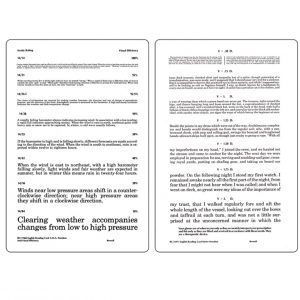 A.M.A. English Reading Card A.M.A. notation and visual efficiency 14/14 to 14/84 size on front. Distance meter notation 0.50 to 2.00 size on back. Item #: BC1196871
A.M.A. English Reading Card A.M.A. notation and visual efficiency 14/14 to 14/84 size on front. Distance meter notation 0.50 to 2.00 size on back. Item #: BC1196871 -
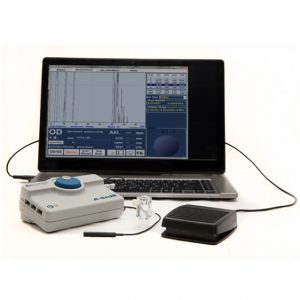
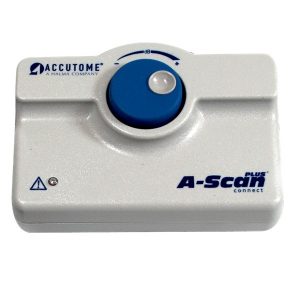 The A-Scan Plus Connect® is designed to meet the demands of today’s refractive cataract surgery. It is the single most effective solution for measuring and calculating all of your patients and refining your surgical outcomes. It has the ability to measure most patients and works great with dense cataracts or patients with fixation difficulties. The Connect links directly to a PC, laptop or tablet device making it the ultimate portable solution. Information can easily be uploaded to electronic medical record (EMR) systems. The improved user interface makes entering patient data, capturing the scan and calculating the measurement much faster.* Features:
The A-Scan Plus Connect® is designed to meet the demands of today’s refractive cataract surgery. It is the single most effective solution for measuring and calculating all of your patients and refining your surgical outcomes. It has the ability to measure most patients and works great with dense cataracts or patients with fixation difficulties. The Connect links directly to a PC, laptop or tablet device making it the ultimate portable solution. Information can easily be uploaded to electronic medical record (EMR) systems. The improved user interface makes entering patient data, capturing the scan and calculating the measurement much faster.* Features:- Immersion and Contact Modes.
- Industry Leading Resolution.
- User-friendly interface.
- Less Patient Chair Time – Faster measurement capture*.
- Automatic Alignment Detection and Sclera Recognition eliminate marginally aligned scans.
- Portable, Lightweight Design – Plug into any PC, laptop or tablet device.
- Share information easily – adaptable document transfer via EMR, email or printer.
- Modern Third and Fourth Generation Formulas including the Hoffer®Q, SRK/T, Holladay, Haigis as well as new post refractive formulas.
- Optimized Lens Constants for superior surgical outcomes.
- Unlimited Software Licenses.
- Streamline your patient data - shares information with B-Scan Plus and UBM Plus.
-
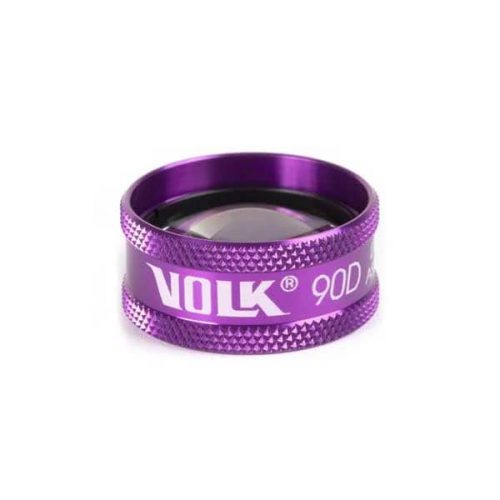
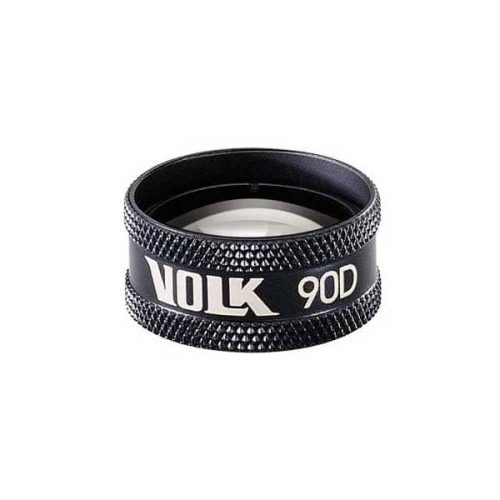 PART #V90C The Volk 90D is the most widely known fundoscopy lens and is to date considered the gold standard in exam rooms across the world. The small profile of the 90D coupled with its optical profile makes it a great first lens. This lens is a perfect choice for general examination and retinal imaging. This lens can be used to get through small pupils for patients who do not prefer or accommodate dilation and as a result is also a popular choice for undilated retinal exams.
PART #V90C The Volk 90D is the most widely known fundoscopy lens and is to date considered the gold standard in exam rooms across the world. The small profile of the 90D coupled with its optical profile makes it a great first lens. This lens is a perfect choice for general examination and retinal imaging. This lens can be used to get through small pupils for patients who do not prefer or accommodate dilation and as a result is also a popular choice for undilated retinal exams. -
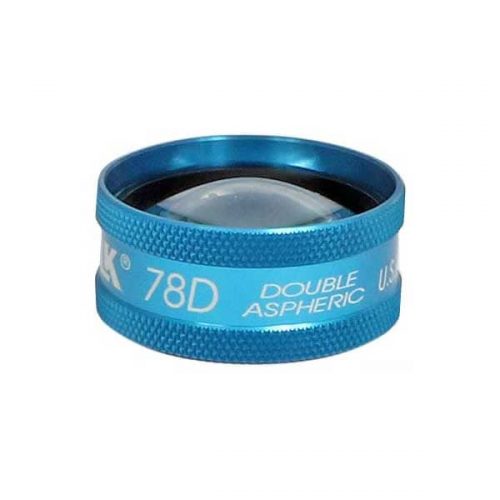
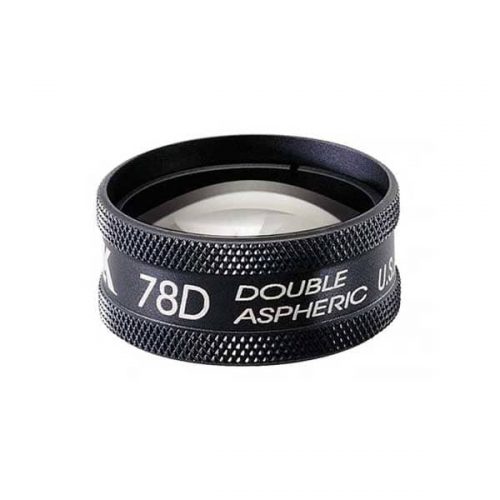 PART #V78LC The is an ideal lens for doctors who regularly cater to populations prone to glaucoma and other posterior pole abnormalities. The double aspheric design and field of view offered by a 78D offers clear and large views of the central mid-retinal regions. This lens offers a high magnification without cutting down too drastically on the field of view. This lens is a popular choice as a general diagnosis lens among doctors who prefer a larger ring size than the more common and smaller profile of the 90D. Dilation is required to obtain optimum retinal imaging with the 78D.
PART #V78LC The is an ideal lens for doctors who regularly cater to populations prone to glaucoma and other posterior pole abnormalities. The double aspheric design and field of view offered by a 78D offers clear and large views of the central mid-retinal regions. This lens offers a high magnification without cutting down too drastically on the field of view. This lens is a popular choice as a general diagnosis lens among doctors who prefer a larger ring size than the more common and smaller profile of the 90D. Dilation is required to obtain optimum retinal imaging with the 78D. -
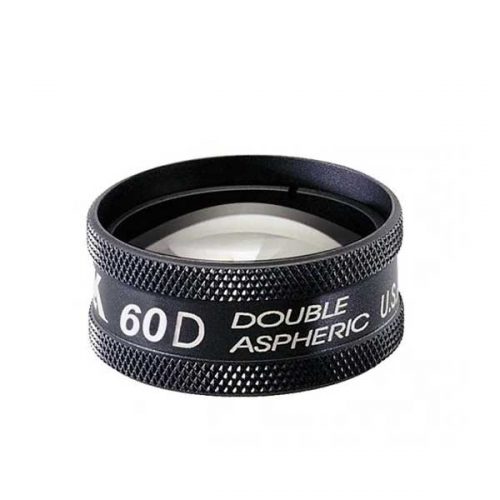 PART #V60C The 60D lens is one of the high magnification fundoscopy lenses used for a thorough and detailed examination of the central retina such as the macula and the nerve head. The trademark double aspheric design provides excellent detail and imaging for detecting subtle details and indications of retinal abnormalities. The optical profile of this lens requires a longer working distance of 18 mm from the patient. The high magnification provided by this lens is a great choice for diagnosis and assessment of the severity of Age-Related Macular Degeneration, following cup to disk ratios in patients and capillary hemorrhages. Dilation is required to obtain optimum retinal imaging with the 60D.
PART #V60C The 60D lens is one of the high magnification fundoscopy lenses used for a thorough and detailed examination of the central retina such as the macula and the nerve head. The trademark double aspheric design provides excellent detail and imaging for detecting subtle details and indications of retinal abnormalities. The optical profile of this lens requires a longer working distance of 18 mm from the patient. The high magnification provided by this lens is a great choice for diagnosis and assessment of the severity of Age-Related Macular Degeneration, following cup to disk ratios in patients and capillary hemorrhages. Dilation is required to obtain optimum retinal imaging with the 60D. -
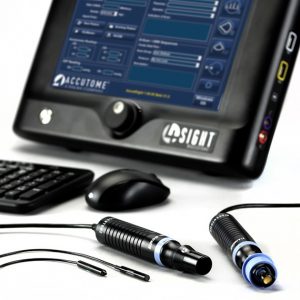
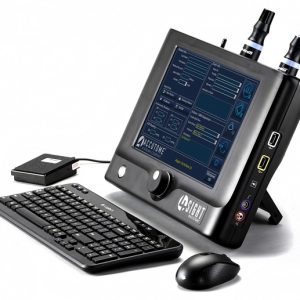 For over 30 years Accutome has built a reputation for high quality, reliable and reasonably priced ophthalmic diagnostic equipment. The addition of the 4Sight is no exception. Designed with eye care professionals in mind, the 4Sight provides a single solution for ophthalmic diagnostics by combining an A-Scan, B-Scan, UBM and Pachymeter in one, easy to use platform. We realize the demands on today’s busy clinics and designed the 4Sight to meet those needs by delivering a high value product that is accurate and efficient.
For over 30 years Accutome has built a reputation for high quality, reliable and reasonably priced ophthalmic diagnostic equipment. The addition of the 4Sight is no exception. Designed with eye care professionals in mind, the 4Sight provides a single solution for ophthalmic diagnostics by combining an A-Scan, B-Scan, UBM and Pachymeter in one, easy to use platform. We realize the demands on today’s busy clinics and designed the 4Sight to meet those needs by delivering a high value product that is accurate and efficient. -
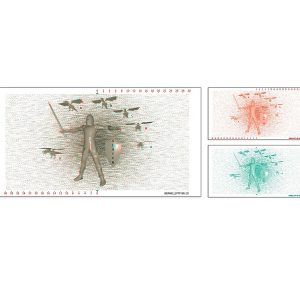
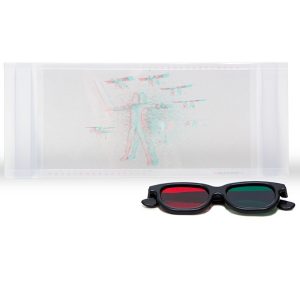 Slayer 3D Variable Tranaglyph. Replaces the popular Topper Vectogram. Size: 10.5" x 5.5" Material: Red/Green slides on transparent vinyl Usage: Can be used with Dual Polachrome Trainer or other slide holders.
Slayer 3D Variable Tranaglyph. Replaces the popular Topper Vectogram. Size: 10.5" x 5.5" Material: Red/Green slides on transparent vinyl Usage: Can be used with Dual Polachrome Trainer or other slide holders.

